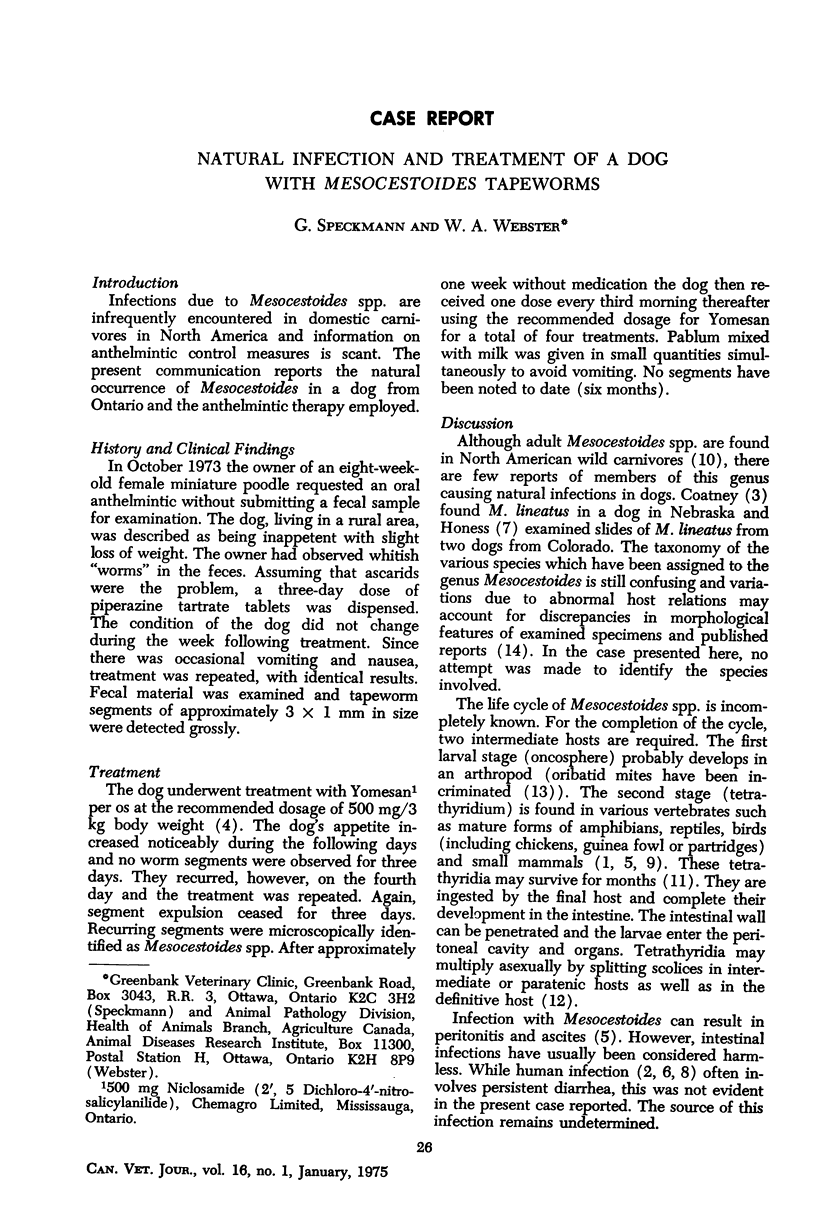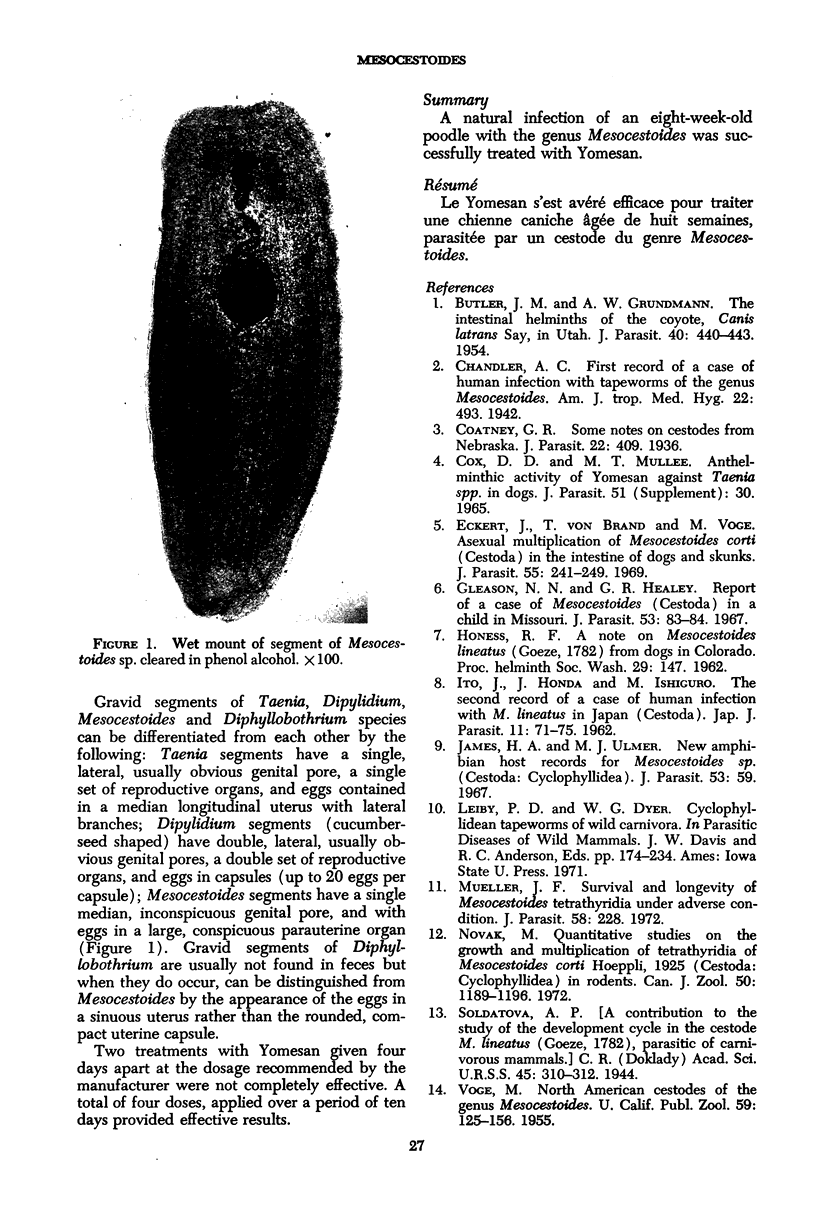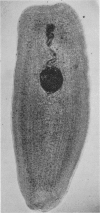Full text
PDF

Images in this article
Selected References
These references are in PubMed. This may not be the complete list of references from this article.
- BUTLER J. M., GRUNDMANN A. W. The intestinal helminths of the coyote Canis latrans Say, in Utah. J Parasitol. 1954 Aug;40(4):440–443. [PubMed] [Google Scholar]
- Eckert J., Von Brand T., Voge M. Asexual multiplication of Mesocestoides corti (Cestoda) in the intestine of dogs and skunks. J Parasitol. 1969 Apr;55(2):241–249. [PubMed] [Google Scholar]
- Gleason N. N., Healy G. R. Report of a case of Mesocestoides (Cestoda) in a child in Missouri. J Parasitol. 1967 Feb;53(1):83–84. [PubMed] [Google Scholar]
- Mueller J. F. Survival and longevity of Mesocestoides tetrathyridia under adverse conditions. J Parasitol. 1972 Apr;58(2):228–228. [PubMed] [Google Scholar]
- Novak M. Quantitative studies on the growth and multiplication of tetrathyridia of Mesocestoides corti Hoeppli, 1925 (Cestoda: Cyclophyllidea) in rodents. Can J Zool. 1972 Sep;50(9):1189–1196. doi: 10.1139/z72-160. [DOI] [PubMed] [Google Scholar]



